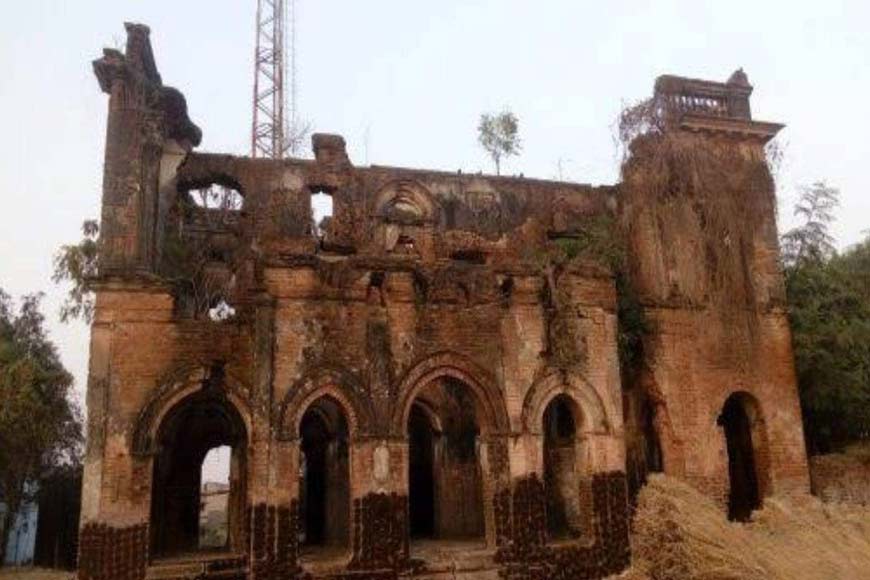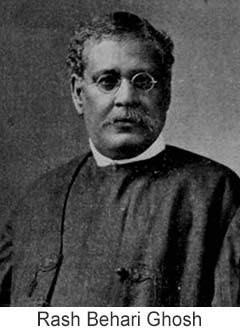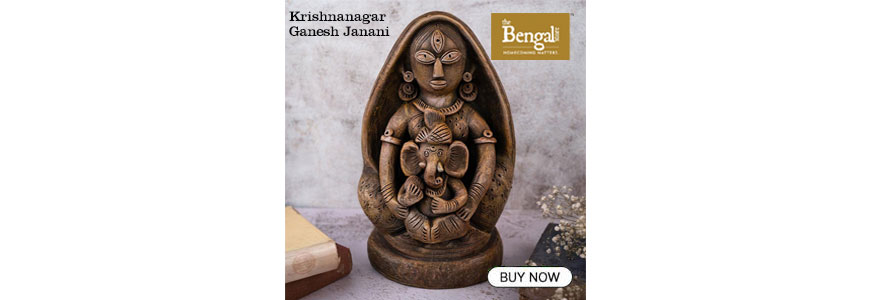Villagers continue Rash Behari Ghosh’s Durga Puja at Burdwan’s Torkona

Ancestral house of Rash Behari Ghosh - Torkona Village Burdwan
Not many people have possibly heard of Torkona village in Khandaghosh, East Burdwan district. Although a large and prosperous village, no community puja (Barowari Puja) is held in the village. Villagers have been continuing the puja initiated by Sir Rash Behari Ghosh. A great luminary figure of the Indian national movement, Sir Rash Behari Ghosh, CSI CIE was a national leader, renowned educationist, brilliant lawyer, social worker and a great philanthropist. He was born in Torkona on 23 December 1845.
Ghosh had an outstanding educational career, achieving top positions in all his public examinations from FA to MA. His initial education started in the village and later moved to Bankura High School. He cleared his entrance exams with flying colours and came to Calcutta. He completed his graduation from Presidency College. In 1866, he obtained the top rank in the MA examination in English. In 1871, he again topped the Law examination and was awarded a gold medal for his brilliant academic result. Ghosh's ability and contributions earned him a series of honours, such as the Tagore Law Professorship (1875–76) at Calcutta University and an honorary DL degree from Calcutta University (1884).
 Ghosh was a renowned figure in the legal profession who was revered and worshipped by all. During the early 20th century he made great fortune through his legal practice, and donated much of it by way of charity and endowments. In 1913, he established an endowment for scientific studies at Calcutta University with an initial capital of Rs 10 lakhs. He also donated Rs 13 lakhs rupees to establish the National Council of Education (NCE). The primary aim of NCE was to impart education - literary, scientific and technical on national lines exclusively under national control. Sir Rash Behari Ghosh was elected the first President of NCE. In 1905, Bengal Technical Institute (BTI) was established. After Independence BTI was converted into Jadavpur University in 1955.
Ghosh was a renowned figure in the legal profession who was revered and worshipped by all. During the early 20th century he made great fortune through his legal practice, and donated much of it by way of charity and endowments. In 1913, he established an endowment for scientific studies at Calcutta University with an initial capital of Rs 10 lakhs. He also donated Rs 13 lakhs rupees to establish the National Council of Education (NCE). The primary aim of NCE was to impart education - literary, scientific and technical on national lines exclusively under national control. Sir Rash Behari Ghosh was elected the first President of NCE. In 1905, Bengal Technical Institute (BTI) was established. After Independence BTI was converted into Jadavpur University in 1955.
Ghosh was a prominent leader of moderate policies in the Indian National Congress and supporter of Gokhale’s political ideology in the Indian freedom struggle. He never supported any kind of extremism and aggression in the INC policies. He became the President of the Indian National Congress in 1907 at its Surat session and then the historic Surat split between the moderate and the extremist leaders in the INC took place. He was an extremely busy lawyer and political leader who travelled extensively to attend to his call of duty but he always had a special place in his heart for Torkona, the village where he was born.
Despite his busy schedule, Ghosh decided to initiate Durga Puja at his ancestral home. The annual four-day autumnal festival held at ‘bonedi baris (aristocrat homes) and ‘Baroyari Puja’(community puja) in Burdwan and Calcutta incited a lot of excitement among the hoi polio, but Khandaghosh was cut off from the grandeur and opulence of city life. Mediocrity reigned the lives of the masses. Bogged down by financial worries, their days were spent worrying about the future and tiding over day-to-day crises. Their predicament pained Ghosh who wanted to do something for these hapless villagers. Finally, he decided to organize Durga Puja at his ancestral home and involve all the villagers to participate. He was confident that the joyous occasion would provide them an opportunity to congregate and enjoy Puja for four days. Elaborate arrangements were made and ‘Bhog’ used to be partaken by the entire community.
Since the very beginning, Durga Puja at Ghosh’s residence has been held in strict adherence to all rituals and the tradition continues. The beginning of Devi-Paksha (the fortnight beginning from the new moon till the next full moon in the month of Ashwin) heralds the Puja. This period is considered the most propitious time for performing holy rites. The actual puja would start from Shasthi, which is the sixth day after the new moon. With ‘Bodhon’ or invocation ceremony of Maa Durga, puja would begin at Ghosh-Bari. The next day, that is Saptami, villagers would join the ceremonial march to the pond for ‘Nabapatrika snan’. Villagers offered Pushpanjali (floral offering) to the goddess on all three days – Saptami, Ashtami and Navami. Ghosh was an erudite and liberal thinker and he ensured that there was no discrimination between villagers and people from all castes and creed were encouraged to participate in the puja.
The puja that Rash Behari Ghosh initiated at his residence continues to be organized by residents of Torkona. These days there is a proliferation of community pujas in the state but the locals never ever speculated about initiating another Durga Puja in the village although the village is quite large with a sizeable population. The puja at Rash Behari’s home has now become a ‘sarvajanin Durgotsav’ (community puja) as envisioned by Ghosh.
Right in the middle of the village stands a crumbling yet magnificent sprawling mansion. Lack of maintenance is visible everywhere. Young Banyan plants have sprouted from the walls of the house. This is Rash Behari Ghosh’s house where he started the autumnal festival. During the puja, Ghosh magnanimously gifted new clothes and money to all villagers. The Ghosh family possessed large tracts of land and ponds in the village but these remain totally neglected. The villagers want the government to renovate and conserve the great philanthropist’s mansion so that the idols can be brought back from Barwaritala and restored to Rash Behari Ghosh’s ‘Thakur-dalan’. They want to see the palace throbbing with life once more and footfalls leading to the Thakur Dalan for Devi-darshan.
Sandhi Puja is another important ritual held at the juncture of Ashtami and Navami. This riual marks the moment when Goddess Durga emerged in her angry Chamunda form to kill the demons, Chanda and Munda. The priest utters mantra and 108 lamps are lit. The drummers (dhaki) break into a frenzied beat. These customs are followed here in the same way as they were followed during Rash Behari Ghosh’s time. The main attraction of Navami is the Maha-Arati held in the evening. This is the concluding day of Durga Puja. The main Navami puja begins after the end of Sandhi Puja. The Navami Bhog is offered to the goddess. On Dashami, the image is immersed in a river and then Vijaya Dashami or Bijoya is celebrated with great enthusiasm. Families exchange sweets and people embrace each other, vowing brotherhood. During Ghosh’s time, Bijoya was a grand affair and everyone was invited and sumptuous food would be offered to all.
Ghosh also established a school and a hospital in his village. Rashbehari Avenue in south Kolkata has been named after him and bears testimony of this great man’s contribution in the public domain. His village has also not forgotten him. In fact, villagers are upset to witness the general apathy shown towards a man of such stature. The entire nation owes it to him and they want to restore the great patriot and philanthropist’s name from the forgotten pages of history and restore the respect he truly deserves.










